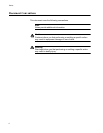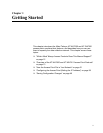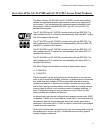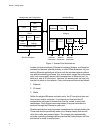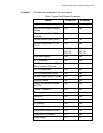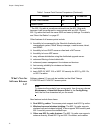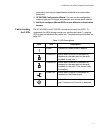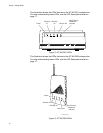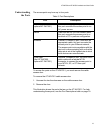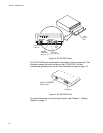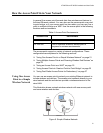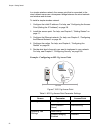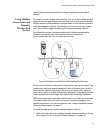
Chapter 1: Getting Started
16
* The 802.11g radio is sometimes referred to as the 802.11b/g radio
because it can be configured to communicate with any 802.11b and
802.11g radios that have the same SSID and security settings. For details,
see “About the Radios” on page 97.
Other features of all access points include:
the ability to be managed by the Wavelink Avalanche client
management system, Allied Telesyn manager, a web browser, telnet,
and SNMP.
the ability to be a DHCP server or client and a NAT server.
the ability to be an ARP server.
easy software distribution using the distributed upgrade server.
advanced filtering of wired data traffic.
enhanced power management for wireless end devices.
fast roaming reliability for wireless end devices.
load balancing.
basic WEP 64, WEP 128, or WEP 152 security for 802.11g, 802.11b,
or 802.11a radios.
What’s New for
Software Releases
2.3?
Software release 2.3 can only be installed on the Allied Telesyn
AT-WA7500 and AT-WA7501 access points.
Note
To determine the model of your access point, from the menu choose
Maintenance > About this Access Point. In the Config String
field, the first five characters tell you the model.
New features include these items:
Dual 802.11g radios: The access points support dual 802.11g radios.
Wireless hops and wireless bridging: The 802.11g radio supports
wireless hops and wireless bridging. It also supports WPA security and
802.1x security across the wireless hops.
Other new 802.11g radio features: The 802.11g radio now supports
antenna diversity, mixed 802.11g and 802.11b modes, and medium
Power Over Ethernet Yes Yes
Heater Option No Yes
Table 1. Access Point Feature Comparison (Continued)
Feature AT-WA7500 AT-WA7501



